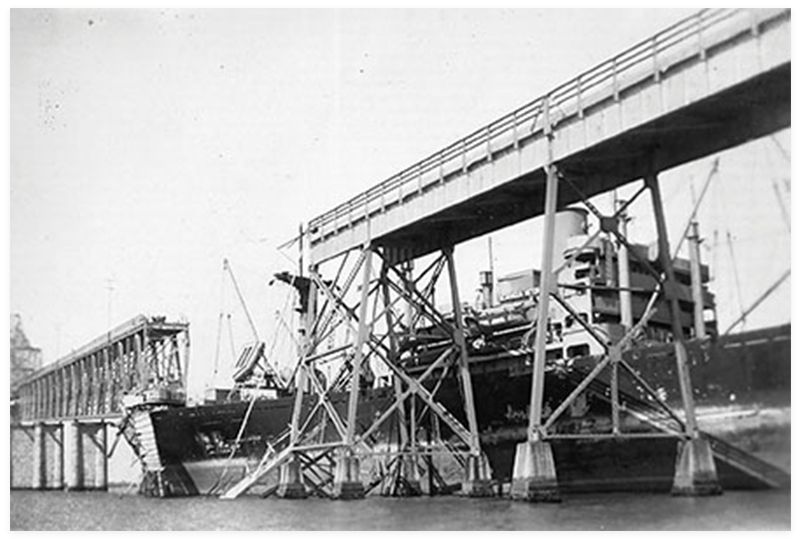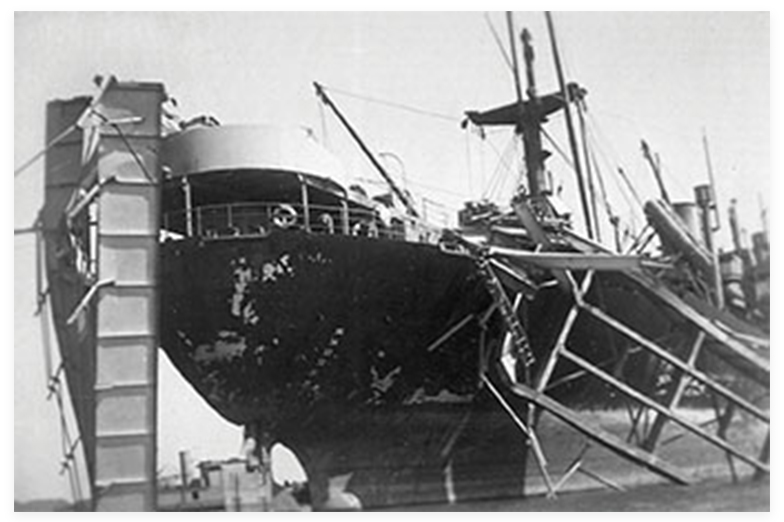The bridge was replaced by the Ravenel Bridge in 2005

In February 1946, a 12,000-ton cargo ship crashed into the Grace Memorial Bridge, causing a 240-foot length of the road to fall into the harbor.
Everyone has bad road days—encountering potholes, detours, and rerouting due to repairs—resulting in massive delays. But nothing compares with what happened here on February 24, 1946.
When a sudden storm blew in that afternoon, the 12,000-ton cargo ship Nicaragua Victory (one of the Victory ships mass produced by the US government in WWII) broke loose from its mooring in the Cooper River. With its engines off, the ship drifted from the city toward Mount Pleasant. Its bow became stuck in the mud, but the stern shifted, slamming into the Grace Memorial Bridge, as traffic was crossing. One massive pier was damaged, and power lines snapped and exploded with sparks, as a 240-foot length of the road fell away. Most cars stopped, but one didn’t. Elmer Lawson; his mother, Rose; his wife, Evelyn; and their children, Robert and Diane, all perished after the car plunged into the Cooper.

The damage to the bridge took months to fix (the US government, then chartering the ship, was sued and paid for the repair). Drivers traveling to Mount Pleasant had their two-and-a-half mile trip extended to 80. Ferries, which the bridge had replaced, were returned to service.
In April, the Army Corps of Engineers developed a fix by installing a 310-foot-long structure called a Bailey bridge that traversed the gap in the roadway. Even though it was supported by a temporary pier, the Bailey span only allowed traffic in one direction; bridge tenders at each end controlled the flow of vehicles—shifting back and forth between travel into or out of the city. Due to weight limitations, any truck or bus more than 12 tons was denied access and had to take the long inland route. Repairs were not completed until June 1946—just in time for the bridge, financed by tolls since its opening in 1929, to become free.
While everyone knew that one bridge was not sufficient, it was not until 20 years later, in 1966, that the three-lane Silas Pearman Bridge was built. Both it and the Grace Memorial were replaced with the current Ravenel Bridge in 2005, fortunately no longer the only link between East Cooper and the city.